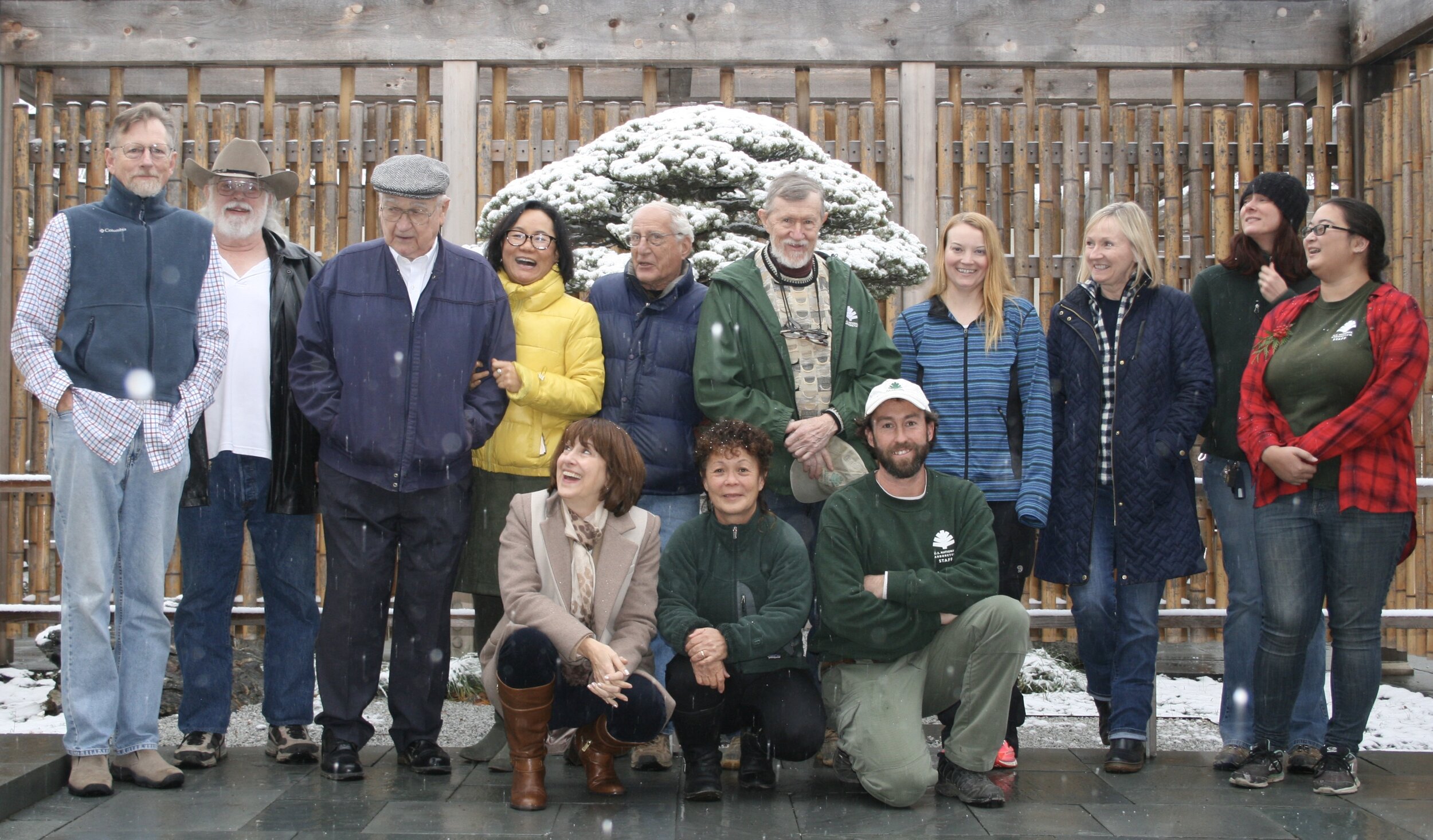Photo by Kenji
The National Bonsai Foundation’s Board of Directors comprises many talented individuals who are passionate about the art of bonsai. Ann McClellan is no exception, so we spoke with her about her contributions to the bonsai world.
Ann has long been involved with the National Bonsai & Penjing Museum, but she joined the Bonsai Board in 2018. She said her work at the Smithsonian Institution and World Wildlife Fund provided her with an excellent knowledge base to be an ambassador for and to support the Foundation’s mission to promote bonsai and foster intercultural friendship.
“I care so much about the trees and the Museum and Arboretum, and I felt I could both share useful info and be a conveyer of the NBF message,” she said.
Ann as a child, collecting sap from a sugar maple
Ann's connection to trees dates back to her childhood, having lived among the beautiful trees and glades at the Lawrenceville School in New Jersey. Her family first lived in a house on the school’s golf course.
“It was like living on a boat in the middle of an ocean of trees and grass,” she said.
Ann said Frederick Law Olmsted, the landscape architect who designed the campus she grew up on as well as other famous outdoor respites, like Central Park in New York City, believed that people benefit from being immersed in thoughtful arrangements of land and plants. Growing up on the campus pay attention to trees her whole life – from the oaks and elms at Lawrenceville campus to the bonsai at the Museum.
Ann studied history at Goucher College outside of Baltimore but has continued to pursue different subjects as a lifelong learner, including during her 16-year career at the Smithsonian Institution. She first worked in product development, searching for items in the collection that could be reproduced for Smithsonian shops and catalogues.
The Lawrenceville campus in the 50s or 60s, courtesy of Lawrenceville School
“I loved that I could learn about millions of objects including botanical specimens,” Ann said.
Through this work, she met entomologists and botanists with whom she worked to educate the public about the different specimens and gardens seen throughout the Smithsonian collections. Ann then transitioned to a position at the World Wildlife Fund, where she helped spread crucial information about the value of wildlife conservation, including sustainable horticulture.
Ann later worked as a freelance writer, which eventually led to her inaugural book called The Cherry Blossom Festival: Sakura Celebration, first published in 2005. She researched, wrote and assembled images for the beautiful ode to D.C.’s annual cherry blossom festival in just six months to meet the publisher’s deadline.
“That was an intense learning period about trees because, in addition to festival facts and what cherry blossoms mean to the Japanese, I also had to learn about them as trees,” Ann said.
Seven years later, Ann worked with National Geographic to publish Cherry Blossoms: The Official Book of the National Cherry Blossom Festival, to honor the festival’s centennial celebration. With these authoring experiences, Ann was the perfect person to write about the National Bonsai & Penjing Museum, at the suggestion of former Museum Curator Jack Sustic.
“I was so grateful for the opportunity, and I have loved learning about bonsai and connecting with the trees,” she said.
Ann worked with Sustic, Museum Specialist Kathleen Emerson-Dell and then-Executive Director Johann Klodzen to produce Bonsai & Penjing: Ambassadors of Peace and Beauty. The book details the history of the Museum’s trees and their instrumental role in international diplomacy, world's fair exhibitions and bonsai interest in the United States.
“There are lots of books on the market but many are not as beautiful as this one, so I’m grateful for all the people who had something to do with that,” she said.
Ann has spent many years promoting bonsai and the Museum through her book and continues to garden clubs, plant lovers and the public about the trees and their remarkable stories. She personally connects with the art because the essence of each tree species is distilled into the bonsai.
“In Japan I saw a 70-foot-tall red pine with the same curved trunk as the Imperial Pine at the Museum, which allowed me to see why the Imperial Pine has such a presence just in its 4 feet,” Ann said. “The fact that a series of people over generations have cared for each of these trees is a message worth sharing.”
Ann (center) with her bonsai book at a receptions for the 2019 American Public Gardens Association Conference (Courtesy of Olivia Anderson Photography)
She aims to highlight how bonsai practitioners around the world so clearly connect with trees in a deep way – and her efforts don’t go unnoticed. In early 2021, Ann received an award from the Japanese government for her success in promoting Japanese culture and promoting friendly relations between Japan and the United States.
“To be honored like this is profoundly moving,” she said. “My life has been dedicated to service in a way – nonprofit work, education, ‘edu-tainment.’ These are not things you do if you’re looking to see your name in lights. It’s more about improving other people’s experiences.”
Ann continues to be an active member on the NBF board and is thrilled about plans to renovate the Museum’s exhibit spaces and tree pavilions.
“It’s exciting to be part of something that has a future, and such a bright one, which I think will make it easier for more people to connect with the trees,” she said.































